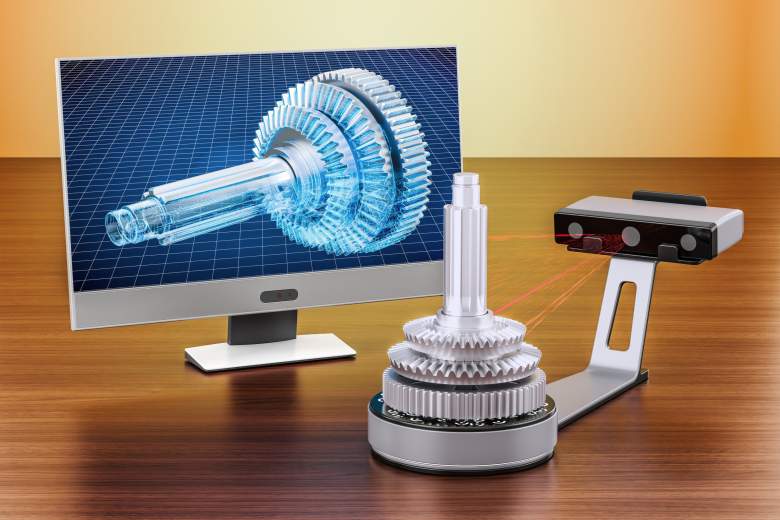
123RF
Anyone who has ever tried to create their own 3D model to print with their shiny new 3D Printer will be the first to tell you how incredibly difficult it can be to get exactly what you have in your mind onto the screen. Even with digital calipers and all of the patience in the world, it’s often the case that you just can’t get your 3D design right. Luckily, you don’t have to be a wiz at creating 3D models from scratch nowadays if you have a 3D scanner.
3D scanners have an infinite number of uses in 2022, with creators and engineers using them for everything from art to prosthetics to toys and so much more. If you’re looking to get into the world of 3D design and want a way to easily get the right dimensions into your 3D design software, a 3D scanner might be what you’re looking for. Here are the 11 best 3D scanners for sale right now.
See Also: Best PLA Filament For 3D Printing
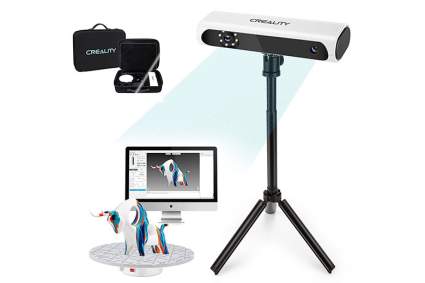
|
Amazon Customer Reviews
|
Price: $399.00 Shop at Amazon | Shop now Read our review |

|
Amazon Customer Reviews
|
Price: $799.00 Shop at Amazon | Shop now Read our review |
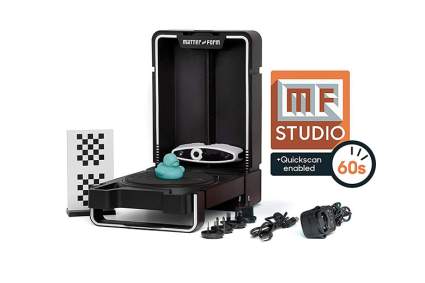
|
Amazon Customer Reviews
|
Price: $749.00 Shop at Amazon | Shop now Read our review |
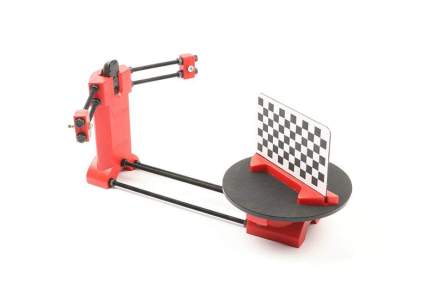
|
Amazon Customer Reviews
|
Price: $119.00 Shop at Amazon | Shop now Read our review |
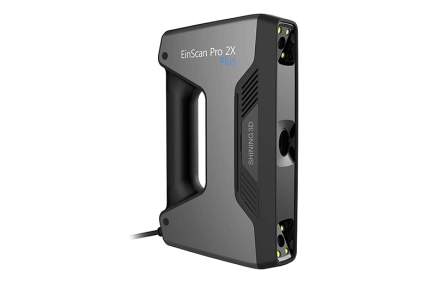
|
Amazon Customer Reviews
|
Price: $8,000.00 Shop at Amazon | Shop now Read our review |

|
Amazon Customer Reviews
|
Price: $599.00 Shop at Amazon | Shop now Read our review |
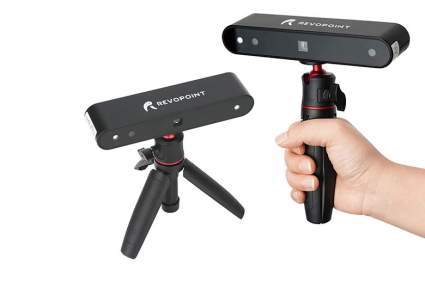
|
Amazon Customer Reviews
|
Price: $399.00 Shop at Amazon | Shop now Read our review |

|
Amazon Customer Reviews
|
Price: $1,199.00 Shop at Amazon | Shop now Read our review |

|
Amazon Customer Reviews
|
Price: $2,099.00 Shop at Amazon | Shop now Read our review |
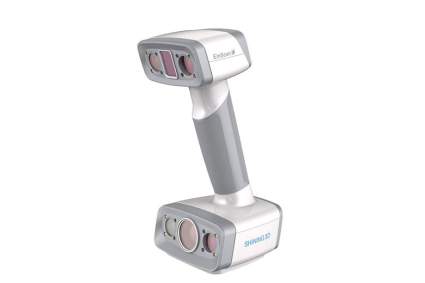
|
Amazon Customer Reviews
|
Price: $5,299.00 Shop at Amazon | Shop now Read our review |

|
Amazon Customer Reviews
|
Price: $1,895.00 Shop at Amazon | Shop now Read our review |
-
1. Creality CR-Scan
Pros:- Good Price Point
- Creality Name Brand
- Accurate
- User-Friendly Design
Cons:- Cannot scan hair, fur, or thin items
- Hardware outperforms software
- Average battery life
The Creality CR-Scan is another tripod-style 3D scanner. While it also has dual modes for stationary or handheld usage, it is a bit larger than the Revopoint. Despite this size difference, the Creality CR-Scan is lightweight enough to be transported easily. When storing the device, users can quickly disconnect the tripod in order to reduce its footprint.
The Creality CR-Scan has an accuracy threshold of 0.1 mm. This device is compatible with both Windows and Mac operating systems, which makes it an appealing choice for a wider range of users. Unlike some comparable models, the Creality CR-Scan includes the turntable, as well.
While the Creality software allows users to perform manual editing, it also includes some “Auto Editing” capabilities. The software will repair color and texture anomalies so that users can more easily export images for printing purposes.
Generally speaking, we would recommend this scanner for users who want an accurate handheld device but do not have the budget for a top-end model like the EinScan Pro. The Creality is accurate enough for casual usage and product modeling but should not be used for engineering purposes.
Find more Creality CR-Scan information and reviews here.
-
2. SOL Laser 3D Scanner
Pros:- High accuracy for the price
- Easy to maneuver/transport
- Software is included
Cons:- Software could be more user-friendly
- Slow to scan
- No manual included
The SOL 3D Scanner by Scan Dimension is a mid-tier 3D scanner that’s designed for desktop use and is light enough (only 7 lbs) to be transferred between your in-home workspace and office.
The SOL 3D can scan objects as heavy as 2 kg. It has two distinct scanning modes, designated “near mode” and “far mode.” The near mode setting is used to scan objects that are up to 100 mm tall and 100 mm in diameter. In far mode, SOL 3D can scan objects as tall and wide as 170 mm.
The Scan Dimension’s scanner has an accuracy threshold of 0.1 mm, which is excellent considering the sub $1,000 price tag. Users can scan objects with SOL 3D’s proprietary software, which is included with the purchase of the device.
Once a scan is complete, they can seamlessly export files in STL or OBJ format and import them for printing purposes. For those not interested in 3D printing, the SOL allows users to effortlessly upload scans to social media, as well.
Due to its price point and high level of accuracy, the SOL 3D is perfect for a variety of applications. These devices can be used by hobbyists, teachers, and entrepreneurs.
Find more SOL Laser 3D Scanner information and reviews here.
-
3. Matter and Form V2 3D Scanner
Pros:- Easy to use software
- Intuitive design
- Foldable and compact
Cons:- Light sensitive
- Not suitable for scanning large objects
- Designed for hobbyists, not professionals
The Matter and Form V2 3D Scanner is a compact option designed primarily for hobbyists. This handheld scanner is priced similarly to the first entry on our list but is significantly easier to transport and store.
Despite its accessible price tag, the Matter and Form is actually extremely fast. In fact, it has one of the quickest scanning cycles of any option on our list, featuring a total scan time of just 65 seconds.
Getting this scanner up and running is a breeze, as it simply needs to be plugged into your Mac or PC. With that being said, the Matter and Form works best in dark rooms. Scanning in bright environments is difficult, if not impossible.
Unfolding the Matter and Form 3D Scanner exposes the simple, but effective rotating base. The upright component of the foldable scanner contains the sensors and laser. The device can transition up and down as needed to scan larger objects. This scanner can process items as wide as 7” and as tall as 9.8”.
Perhaps the best part about the Matter and Form is the software itself. The product developers designed both the device and the software with hobbyists in mind. Even those inexperienced with 3D scanners can familiarize themselves with this product in minutes.
Find more Matter and Form V2 3D Scanner information and reviews here.
-
4. BQ Ciclop
Pros:- Open source
- Affordable
- Easy to use
Cons:- Low accuracy threshold
- Assembly required
- Not suitable for professional applications
Our third selection is the BQ Ciclop, which is a unique DIY scanning solution that relies on open-source software. The creator, BQ, provides buyers with everything they need to get their scanner kit up and running. Due to the open-source nature of the software, buyers are free to modify the function of the scanner to suit their unique needs.
While the thought of using open source software may sound intimidating, BQ has actually made the entire process incredibly easy. Virtually anyone can capture 3D scans using the BQ Ciclop and the developer’s app, Horus.
The BQ Ciclop has a maximum scan volume of 250 x 205 mm. It has a resolution of 0.3 mm, making it less accurate than most other options. Once your BQ Ciclop is assembled, you can easily connect it to your favorite device using Bluetooth or USB.
While the BQ Ciclop is certainly not winning any awards for producing the most dynamic scans, it is a fun purchase for beginners who really want to learn the ins and outs of 3D scanning.
-
5. Best For Professionals: Shining 3D EinScan Pro 2X Plus
Pros:- Fast and accurate
- Handheld
- Includes CAD features
Cons:- Expensive
- Not designed for casual users
- Occasionally struggles with shiny surfaces
Thus far, our list has focused on 3D scanners that are good for hobbyists and emerging entrepreneurs. But what about professionals that need high-resolution 3D scanning capabilities? We are glad you asked!
The Shining 3D EinScan Pro 2X Plus is a top-of-the-line scanner designed for independent professionals. This handheld device is fast, accurate, and reliable. The Shining is capable of scanning extremely complex objects and can even be used to reverse engineer components.
At first glance, the Shining may not look much different than more affordable handheld scanners. However, we assure you that this is not your run-of-the-mill scanning equipment. Within the device are cutting-edge software and hardware components that allow for ultra-fast scanning with an accuracy of 0.04 mm.
The Shining 3D EinScan Pro 2X Plus is capable of exporting files in many popular formats, including P3, ASC, PLY, OBJ, and more. As if that were not enough, the EinScan has advanced CAD functionalities, which are perfect for engineering applications.
Find more Shining 3D EinScan Pro 2X Plus information and reviews here.
-
6. HP Z 3D Scanner Camera
Pros:- Easy setup
- Simple to use
- Camera can be used for other purposes
Cons:- Must manually rotate objects
- Not suitable for scanning complex items
- Compatibility concerns with some device brands
The renowned printer and computer company HP has migrated into the 3D scanning space, as well. While they offer a variety of 3D scanner options, the HP Z is extremely popular and affordable. This device is incredibly easy to install, as it simply mounts onto your monitor.
In order to perform a scan, launch the included software and hold the object in front of the camera. The program will prompt you to carefully rotate the object that you are scanning so that the device can analyze all sides. The HP Z will use this information to create a 2D or 3D image of the object.
Once the scan is complete, you can use the software to export the file for editing or 3D printing purposes.
The HP Z is by far one of the lightest and simplest devices on the list. Like other budget options, the HP Z is better suited for hobbyists and casual users than it is for professionals.
The HP Z is compatible with Windows 10 powered devices but may not work as seamlessly when paired with Mac computers. The HP Z can scan objects up to 12” in length and width.
Find more HP Z 3D Scanner Camera information and reviews here.
-
7. Revopoint POP 3D
Pros:- Portable
- Easy to use
- Lightweight
Cons:- Scans are less detailed than other options
- Software experiences occasional glitches
- Not great for scanning large objects
The Revopoint POP 3D is a very user-friendly option that can be used as a handheld device or as a stationary scanner. The handle opens up into a tripod so that the device can be positioned on a shelf or other flat surface for fixed scanning.
The Revopoint has an accuracy of up to 0.3 mm and has texture and high-precision scanning modes. The grab-and-go design of the Revopoint makes it ideal for indoor or outdoor scanning. If you’re new to manual scanning, the Revopoint also has an “auto scan” feature that can be used with a turntable.
Revopoint designed the POP 3D with the minimalist in mind. The device includes only one USB port, which is used for both charging and data transmission purposes. The Revopoint is compatible with Macs, PCs, phones, and tablets.
Revopoint also sells an adjustable phone mount and an auto turntable, as these items are not included with the scanner. For users that want to get the most out of this budget-friendly handheld scanner, we recommend picking up both the turntable and phone mount, as they can be had for less than $100 total.
Find more Revopoint POP 3D information and reviews here.
-
8. Shining EinScan SE 3D Desktop Scanner
Pros:- Easy to use
- Great software and hardware
- Multiple scan modes
Cons:- Small scan volume
- Not compatible with AMD processors
- Assembly required
If you are interested in a high-quality scanner from a reputable company, our next two selections are for you. While the EinScan Pro 2X Plus is one of the most dynamic products on our list, Shining has a full line of EinScan at a variety of price points.
The next Shining 3D scanner on our list is the EinScan SE. This desktop 3D scanner has a traditional configuration, which includes a turntable and connected camera mount. While not as accurate as the Pro 2X Plus, the EinScan SE has a threshold of 0.1 mm. This is plenty accurate for the majority of scanning applications.
Like all EinScan products, the software included with this option is easy to use. As soon as you assemble the various components, you can begin taking high-quality scans of objects as large as 700 mm by 700 mm in fixed mode. The sizing limit for 360-degree auto-scans is 200 mm by 200 mm.
The EinScan SE 3D is lightning-fast and can complete a fixed scan in just eight seconds. The automatic scan mode takes a mere two minutes to generate a 360-degree view of the object of your choice.
Find more Shining EinScan SE 3D Desktop Scanner information and reviews here.
-
9. Shining EinScan SP 3D Desktop Scanner
Pros:- Extreme accuracy
- Includes cutting edge reverse engineering software
- Multiple scan modes
Cons:- Assembly required
- Not portable
- Small auto-scan volume
The EinScan SP desktop scanner is a more robust version of the SE model discussed above. This scanner is also a desktop-style device and has a footprint of approximately 26” x 10”.
The EinScan SP includes reverse engineering software from Solid Edge, making it great for scanning highly technical components such as auto or machine parts. The EinScan SP is more accurate than the SE variant, with a threshold of 0.05 mm in single scan mode.
The price point of the Shining EinScan SP probably puts it out of reach for casual users and hobbyists. However, it serves as a great mid-tier option for entrepreneurs, engineers, and other professionals that need accurate scanning solutions. Due to its design, the EinScan SP is not easy to transport. Transport would likely require partial or complete disassembly.
With that being said, EinScan provides users with access to top-quality software, reliable scanning devices, and unparalleled customer support. These attributes are what led to multiple EinScan devices being included on our list of the best 3D scanners in 2022.
Find more Shining EinScan SP 3D Desktop Scanner information and reviews here.
-
10. EinScan H Hybrid Scanner
Pros:- Handheld
- Software included
- User-friendly
Cons:- Struggles to scan shiny surfaces
- Expensive
- Requires skillful application to create quality scans
The EinScan H Hybrid Scanner uses a combination of LED and infrared light sources to produce high-quality and accurate scans. Like other EinScan devices, the H Hybrid scanner includes multiple modes and can be used for a broad range of applications.
The EinScan H Hybrid Scanner is a handheld device that is slightly more affordable than the other portable EinScan selection featured above. While this versatile device can be used for many different purposes, it is ideal for scanning faces, animals, and textured objects. This device can also be used in the healthcare and entertainment industries.
The H Hybrid has an accuracy threshold of 0.05 mm. The device can be used to scan objects up to 13 ft long. As always, EinScan includes all necessary software with the device so that users simply need to install the requisite programming.
The only real shortcoming of the H Hybrid handheld scanner is that it struggles to completely scan shiny surfaces. However, this is a common issue with most scanners and can be resolved by coating the item with a 3D spray.
Once scans are complete, users can upload the data to their computer or another device via the USB port. They can then use the EinScan software to edit, modify, and export the scans for 3D printing purposes. The EinScan Hybrid H supports some of the most popular file formats, including OBJ, STL, ASC, PLY, and 3MF.
Find more EinScan H Hybrid Scanner information and reviews here.
-
11. SOL Pro 3D Scanner
Pros:- Top-quality features and performance
- Intuitive software included
- Easy setup and durable design
Cons:- A bit expensive
- Not handheld
- Must use black-out tent
We are rounding out our breakdown of the best 3D scanners with the SOL Pro. This device takes everything that is great about the standard SOL 3D scanner and makes it better.
The SOL Pro has an accuracy threshold of 0.05 mm and can produce precision scans. Like the standard SOL 3D scanner, the Pro is a desktop-style device with a built-in turntable. The SOL Pro is easy to use, easy to assemble, and just plain fun.
If you purchase the SOL Pro, you’ll also receive the SOL Pro Creator software. This highly automated technology provides users with finished 3D scans that are ready to be imported for display or printing purposes. The Pro Creator software even has tools to assist with scanning dark surfaces or unsteady objects.
The SOL Pro uses a combination of white light and laser triangulation technology to produce high-quality images. These solutions allow the SOL Pro to effectively scan textured items and complex objects.
Due to its price, the SOL Pro is most suitable for professionals and extremely committed hobbyists. It is not recommended for those that are new to the world of 3D scanning. Novices may want to stick with a more affordable option.
What Can You Do With a 3D Scanner?
3D scanners have a multitude of uses, but essentially, a 3D scanner allows you to take any physical product and scan it into your 3D design CAD software. Then, you're able to work with and manipulate that 3D scan to create exactly what you're looking for. 3D scanners make designing exactly what you want to 3D print significantly easier in most use-cases.
How Accurate Are 3D Scanners?
Of course, the accuracy of your 3D scanner depends on the model of 3D scanner that you buy. Most of the cheaper 3D scanners tend to not be quite as accurate as the professional 3D scanners. If your 3D scanner is portable, it's accurate up to 0.01mm and 0.1mm.